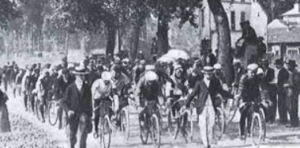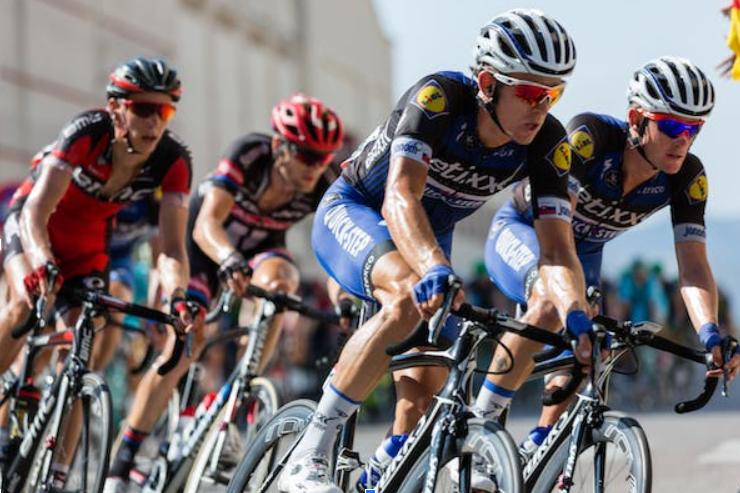Introduction:
Cycling, with its roots deeply embedded in human history, has evolved from a simple means of transportation to a global phenomenon and a fiercely competitive sport. The history of cycling as a sport is rich and diverse, spanning centuries and continents. In this article, we embark on a journey through time to explore the fascinating evolution of cycling and its transformation into one of the most beloved and challenging sports of our era.
Early Beginnings:
The origins of cycling can be traced back to the early 19th century when the first mechanical bicycles, known as velocipedes or “boneshakers,” appeared in Europe. These early contraptions were made entirely of wood, lacked pedals, and required riders to use their feet to push themselves forward. The design underwent various modifications over the years, leading to the introduction of the iconic high-wheeled bicycles, or “penny-farthings,” in the 1870s.

The Birth of Competitive Cycling:
The late 19th century witnessed the birth of competitive cycling, with the first recorded bicycle race taking place in Paris in 1868. The races quickly gained popularity, and by the 1890s, velodromes, specialized tracks for bicycle racing, were being built across Europe. The sport’s inclusion in the inaugural modern Olympic
Games in Athens in 1896 further solidified its status.

The Golden Age of Cycling:
The early 20th century marked the “Golden Age of Cycling.” The Tour de France, inaugurated in 1903, emerged as the preeminent stage race, capturing the imagination of cycling enthusiasts worldwide. The gruelling competition, covering thousands of kilometres through challenging terrains, showcased the resilience and endurance of cyclists.

Hugh Atkins | Pure France
Innovations and Advancements:
Cycling technology underwent significant advancements in the mid-20th century, with the introduction of derailleur gears, lightweight materials, and aerodynamic designs. These innovations not only improved the performance of bicycles but also paved the way for more diverse and challenging race formats.

SRAM-XX1-Eagle-AXS-Test-Review | ENDURO Mountainbike Magazine
The Rise of Professionalism:
As the sport continued to gain popularity, professional cycling emerged as a distinct entity. Renowned cyclists like Eddy Merckx, Jacques Anquetil, and Bernard Hinault became household names, dominating the cycling scene and setting records that stood the test of time.
The Lance Armstrong Era and Challenges:
The late 20th and early 21st centuries were marked by the dominance of American cyclist Lance Armstrong, who won the Tour de France a record seven consecutive times from 1999 to 2005. However, Armstrong’s achievements were later tarnished by doping allegations, underscoring the challenges and controversies that cycling faced during this period.

Lance Armstrong Is Stripped of His 7 Tour de France Titles | The New York Times
Modern Cycling:
In recent years, cycling has witnessed a resurgence in popularity, with major events like the Tour de France, Giro d’Italia, and Vuelta a España captivating global audiences. The sport has embraced diversity with the introduction of women’s cycling and various disciplines such as mountain biking, track cycling, and cyclocross.

Conclusion:
The history of cycling as a sport is a narrative of innovation, competition, and human endurance. From its humble beginnings as a mode of transportation to its current status as a thrilling and globally celebrated sport, cycling has come a long way. As we pedal into the future, the legacy of cycling as a symbol of resilience, determination, and the pursuit of excellence continues to inspire generations of cyclists and fans worldwide.











